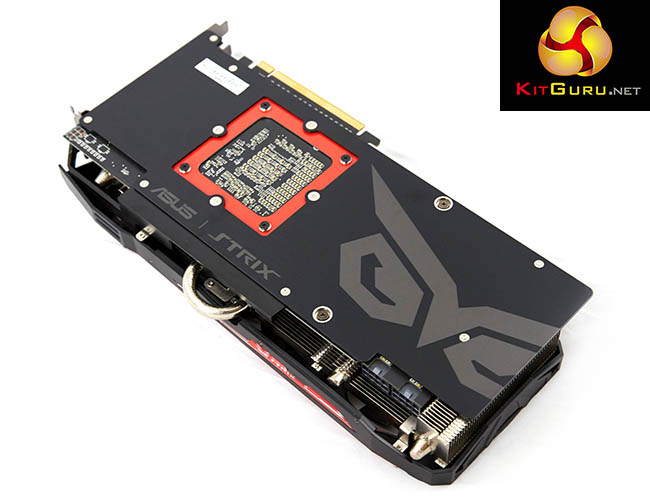There is much to like about AMD's Fury X – the move to the new high bandwidth architecture has to be applauded and there is some indication that we are seeing signs of the potential at Ultra HD 4K, even at this early stage. We do feel this current generation of hardware has failed to truly inspire the enthusiast audience however, especially when custom partner GTX980 Ti's from Nvidia partners are generally so far ahead at both 1440p and 4K resolutions.
AMD should improve performance via drivers over the coming months so we will revisit the Fiji hardware with new tests when Catalyst has matured a little more. We aren't keen to focus on ‘what if' situations though – we can only test what we have, right now. And right now, the Nvidia GTX980 Ti is still the high end card to buy.
The Fury X card we received was tainted with pump noise issues and horrible coil whine – and ours was delivered straight from the American retail channel. We have another Sapphire Fury X sample in our labs and pump noise and coil whine are clearly evident – we managed to get this card recently from Overclockers UK stock, before they sold out. We await another look at Fury X, when Revision 2 hits in the coming weeks. Sadly there is very limited, if any stock of either Rev 1 or Rev 2 Fury X cards in the UK right now.
We feel the air cooled Fury cards offer more than the Fury X – the custom coolers from Sapphire and ASUS are excellent, and the performance, when overclocked is very close to the ‘out of the box' Fury X. You can save a lot of money in the process too and we all like that.

Asus have cast away the ‘all in one' liquid cooler and have incorporated their Direct CU III cooler onto the PCB. This cooler is quiet and proficient – holding temperatures when gaming between 70c and 73c at all times. It didn't quite match the Sapphire Tri-X cooler in either noise emission or thermal tests, but it is very close indeed.
Asus have fitted their card with a substantial backplate and GPU Fortifier which helps flatten out the temperatures across the full length of the PCB, while enhancing rigidity. The only real hotspot is on the exposed PCB section at the rear of the Fiji core. It peaked at around 72 under full load, so well within safe parameters.
The lack of HDMI 2.0 support may not be critical for most gamers, but for those of us gaming with large 4K television sets in the UK – many of them have yet to incorporate a DisplayPort. HDMI 1.4a is limited to 30hz at the native resolution, unless you opt to pay more for a converter cable, which we haven't tested ourselves yet. I fail to see why AMD didn't try to work out a way to add native HDMI 2.0 support to their latest Fiji solutions.
Performance from the Fury card is not lacking, especially at 4K resolutions when the high bandwidth architecture shines – scaling to the highest resolutions is very impressive indeed. The direct comparison against the Asus GTX980 Strix (£420 at Amazon HERE) shows the Fury card winning all of the time at 3,840×2,160, and losing out only a couple of times in some game engines at 1440p.
We are a little surprised to see that the ASUS R9 Fury Strix DC3 is running at a reference 1,000mhz out of the box, with some retailers focusing on a 1,020mhz clock speed, which is only achievable by installed GPU Tweak 2 then manually selecting the OC mode. Asus should have set the BIOS speed directly to this speed, or greater – and without this reliance on proprietary software.
The AMD Fury is clearly designed to target and outperform the GTX980, and we intentionally selected an (almost) equally priced Asus GTX980 Strix for the comparison today. The problem for AMD is that Nvidia partners such as Palit have dropped their prices recently, and their Jetstream model is available for only £379.99 inc vat. The overclocked enhanced Palit model is only £10 more, at £389.99 inc vat. The excellent Gigabyte GTX980 Windforce model is also now £389.99 inc vat.

You can buy the Asus Radeon R9 Fury Strix DC3 from Overclockers UK for £455.99 inc vat. We do feel Fury hardware needs a little price reduction to become more tempting against competitively priced GTX980's – hopefully some deals will appear on big retailers in coming months.
Discuss on our Facebook page, over HERE.
Pros:
- looks attractive.
- high fan quality.
- backplate helps reduce hot spots.
- ASUS GPU Tweak 2.0 works well.
- excellent 4K performance.
Cons:
- Its a reference 1,000mhz out of the box, only GPU Tweak 2.0 software takes it to 1,020mhz on OC setting.
- no ability to overclock memory.
- Lacks HDMI 2.0 support.
- modest overclocking headroom.
- Pricing could be slightly more competitive against some GTX980 cards.
Kitguru says: The Asus R9 Fury Strix DC3 is a great performer, and offers good value when compared against the Fury X. It is quiet, cool and is faster than the GTX980.

 KitGuru KitGuru.net – Tech News | Hardware News | Hardware Reviews | IOS | Mobile | Gaming | Graphics Cards
KitGuru KitGuru.net – Tech News | Hardware News | Hardware Reviews | IOS | Mobile | Gaming | Graphics Cards



Wonder what settings were used for the Witcher 3. I can see horrible scaling for the 295×2. With the latest Catalyst drivers and game patch the 295×2 should be performing better then every single GPU in this review. Must be the issue with TemporalAA and crossfire.
The 295×2 results in those graphs is identical to the results in KG’s graphs before the latest 15.7 Catalyst drivers. My guess is, they have not re-tested the 295×2 with the new drivers yet, and are re-using the results from their previous testing, done with drivers that did not support Crossfire in Witcher 3 – thus why it looks remarkably like a 290X.
On the one hand, I understand, that would be a LOT of re-benchmarking to do on a lot of AMD cards with the new drivers. On the other hand, especially with Witcher 3, those new drivers are likely the difference between a third-to-last-place position and top-of-the-heap position for the 295×2.
I am currently updating tests with 15.7 – the text in this review states we are using 15.6 — ‘For the last 20 days we have been testing and retesting all the video cards in this review with the latest 15.6 Catalyst and 353.30 Forceware drivers.’
Unfortunately Catalyst 15.7 just appeared a short while ago and it takes a good amount of time to keep retesting with the latest drivers. A review next week will feature the new 15.7 driver results. thanks for your patience but it can be a full time job keeping these results always updated. thanks – Allan
Yeah I have no complaints about it, was just wondering the cause (since I only read parts of the review.). Doing benches all over again with each driver and update is PiA. Even doing personal benchmarks are PiA IMO.
Definitely not complaining, just wondering if it was due to using previous drivers, etc. Take you’re time. I know testing consumes a bunch of time even on a few pieces of hardware. Reviewers like you have too much on hand along with personal lives/jobs for people to be impatient.
it def adds performance. I just got a R9 380 4gb card as our 290 got unstable. its playing GTA V at 1440P at 60 FPS ALL day. with low AA and AF nothing crazy, but all high/ultra settings
I’m going into Pc gaming and leaving console gaming. I have done a lot of research and I decided to go with AMD because freesync monitors are cheaper. I want 1440p and well above 60fps. can some please recommend which card I should pick between Amd 390x , fury and fury x
https://pcpartpicker.com/forums/topic/95994-asus-fury-strix-or-390x
take the Fury, Asus model from this review
->Learn more HERE>>
>
Very nice card. Hopefully prices will come down, of the Fury and 980, as supply of the Fury ramps up.
If you have the money take a fury i will say 🙂
If you like to save some i will take a AMD 290 🙂 it’s the same card as 390, and it’s only slight worse but the price is lower 🙂
And just be aware the freesync monitors only works from FPS X to X, like FPS 45 to 75. All over and all lower will freesync not work and not be running. I cannot give you the accurate frames from and to because it’s different on every freesync monitor. Just letting you know so you can look after that when you shop monitor 🙂
I’d wait for the fixed Fury X personally, From the air-cooled Furies currently available the Sapphire edges a win for me. If going for a Free-sync monitor you need to keep an eye on there working ranges, For example although a 144 hz monitor there free-sync range seems to be limited, For example many only work from a minimum of 40 hz or higher while another one I can think of works from 30 hz but tops out at 90 hz meaning if it goes anywhere outside that range Free-sync switches off. The G-sync monitors tend to have full range cover ie: 30- 120/144 but as you said they can often be a lot more expensive, For example a 27″ 144hz IPS monitor has a price difference of roughly 200 quid in the UK between Free-sync and G sync models. That is a big difference.
Nice performances givien the premature drivers. I’m ordering 2 fury strix.
id go dual r9 fury – the strix in other reviews is much more power efficient than the sapphire model
if you cross fire the 380 performance is on par with a titan x